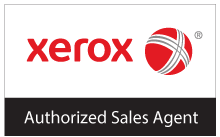Transitioning to the cloud involves coordinating many moving parts, each with its own risks and rewards. Calculating ROI for transitioning consists of measuring the costs and examining the benefits over time for a traditional on-premises solution against one or more potential cloud-based solutions.
Calculating ROI isn’t easy, however, it’s an essential calculation. It will transcend every decision from how your IT delivers value to your business to how you invest in IT.
Here are some considerations regarding cloud ROI:
• Start by really measuring it. Many believe that shifting to the cloud will automatically yield a significant ROI. However, that’s not always the case! Doing the math can help you see where transitioning makes sense, how to maximize benefits, and all of the potential trade-offs. This is a valuable exercise for making truly informed decisions.
• ROI changes depending on the delivery model. For example, the return on software as a service (SaaS) takes longer to realize than more hardware infrastructure-focused cloud services.
• It’s not all about saving money. Like many business decisions, cost savings are one factor to consider. Much of your ROI may be delivered in the form of agility, improvement in service, and the opportunity to support new revenue streams.
• Most cloud solutions provide a narrow set of services. When you see X dollars per person for SaaS, for example, you’re only seeing a portion of the cost you’ll incur to successfully implement and run a cloud solution. ROI will vary vastly depending on the size and type of workload going to the cloud. For example, if you’re running a high-performance application one week per month when you need to double capacity, your ROI can be significant. Meanwhile, applications with regular use may give you a more modest return.
• ROI will change over time. Many companies show that as they begin to achieve increased efficiencies and reduced costs, they eventually reach a tipping point after moving a significant amount of their infrastructure to the cloud. Being free of purchasing, installing, configuring, and upgrading infrastructure pays off over months and years. When you begin avoiding major purchases, then there is often a sudden increase in the return.
While the cloud creates significant opportunities, the benefits can vary widely depending on the delivery model, workload, and amount of time you commit. Analyzing ROI based on these factors can enable you to find the right model to meet your unique business needs. To learn more, contact one of our hubTGI representatives – we can help you determine the right cloud solution for your business.






